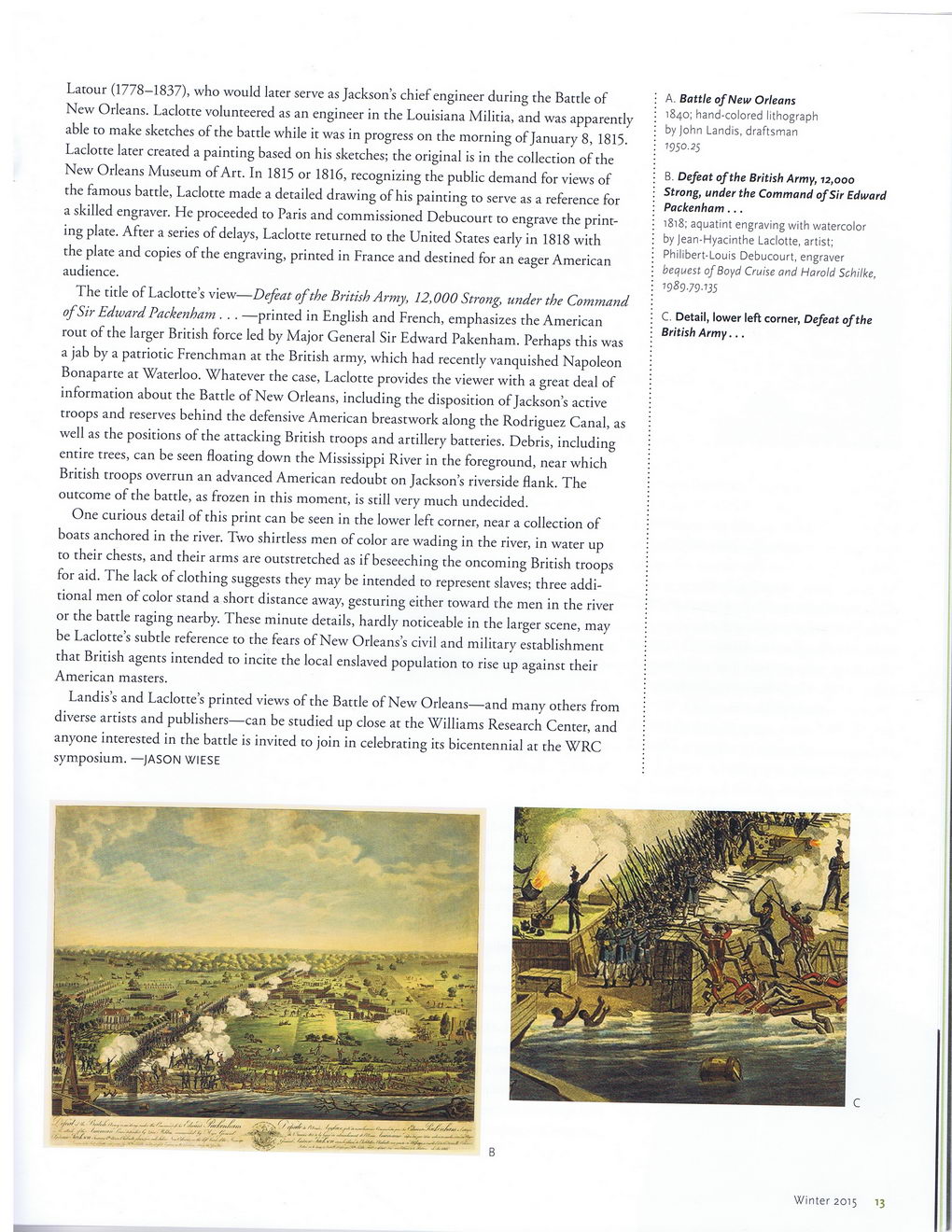This text was obtained via automated optical character recognition.
It has not been edited and may therefore contain several errors.
Latour (1778-1837), who would later serve as Jackson’s chief engineer during the Battle of New Orleans. Laclotte volunteered as an engineer in the Louisiana Militia, and was apparently able to make sketches of the battle while it was in progress on the morning of January 8, 1815. Laclotte later created a painting based on his sketches; the original is in the collection of the New Orleans Museum of Art. In 1815 or 1816, recognizing the public demand for views of the famous battle, Laclotte made a detailed drawing of his painting to serve as a reference for a skilled engraver. He proceeded to Paris and commissioned Debucourt to engrave the printing plate. After a series of delays, Laclotte returned to the United States early in 1818 with the plate and copies of the engraving, printed in France and destined for an eager American audience. The title of Laclotte’s view—Defeat of the British Army, 12,000 Strong, under the Command of Sir Edward Packenham . . . —printed in English and French, emphasizes the American rout of the larger British force led by Major General Sir Edward Pakenham. Perhaps this was a jab by a patriotic Frenchman at the British army, which had recently vanquished Napoleon Bonaparte at Waterloo. Whatever the case, Laclotte provides the viewer with a great deal of information about the Battle of New Orleans, including the disposition of Jackson’s active troops and reserves behind the defensive American breastwork along the Rodriguez Canal, as well as the positions of the attacking British troops and artillery batteries. Debris, including entire trees, can be seen floating down the Mississippi River in the foreground, near which British troops overrun an advanced American redoubt on Jackson’s riverside flank. The outcome of the battle, as frozen in this moment, is still very much undecided. One curious detail of this print can be seen in the lower left corner, near a collection of boats anchored in the river. Two shirtless men of color are wading in the river, in water up to their chests, and their arms are outstretched as if beseeching the oncoming British troops for aid. The lack of clothing suggests they may be intended to represent slaves; three additional men of color stand a short distance away, gesturing either toward the men in the river or the battle raging nearby. These minute details, hardly noticeable in the larger scene, may be Laclotte’s subtle reference to the fears of New Orleans’s civil and military establishment that British agents intended to incite the local enslaved population to rise up against their American masters. Landis’s and Laclotte’s printed views of the Battle of New Orleans—and many others from diverse artists and publishers—can be studied up close at the Williams Research Center, and anyone interested in the battle is invited to join in celebrating its bicentennial at the WRC symposium. —JASON WIESE A. Battle of New Orleans 1840; hand-colored lithograph by John Landis, draftsman 1950.25 B. Defeat of the British Army, 12,000 Strong, under the Command of Sir Edward Packenham... 1818; aquatint engraving with watercolor by Jean-Hyacinthe Laclotte, artist; Phili bert- Lou is Debucourt, engraver bequest of Boyd Cruise and Harold Schilke, 19g9.79.135 C. Detail, lower left corner, Defeat of the British Army...

New Orleans Quarterly 2015 Winter (15)